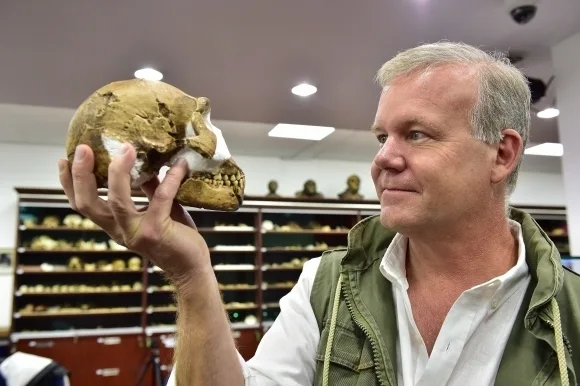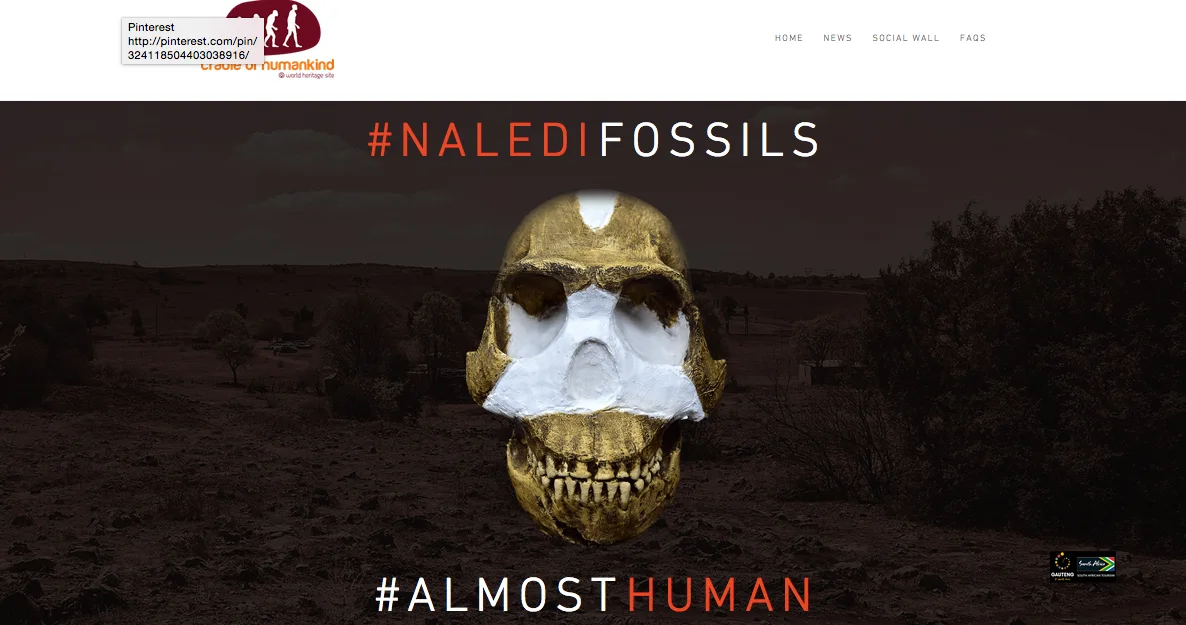The discovery of Homo naledi in the Cradle of Humankind UNESCO World Heritage Site is the most exciting palaeonathropological find to come out of South Africa this century, so it’s no surprise it trended at number 1 worldwide on Twitter on the day of the announcement.
About 1 550 fossils were found in the Dinaledi cave system (hence the name Homo naledi) and the paleoanthropologists who were part of the excavation say that thousands more are still buried there.
Flow Communications had the pleasure and honour of not only being a part of this game-changing discovery, we were there to cover the announcement of Homo naledi for our clients South African Tourism, Gauteng Tourism Authority and of course Maropeng.

The discovery was more than the palaeonathropologists had bargained for, according to Professor Lee Berger who led the Rising Star expedition into the cave system to recover the fossils: "We'd gone in with the idea of recovering one fossil. That turned into multiple fossils. That turned into the discovery of multiple skeletons and multiple individuals."
The number of individual hominin fossils dicovered at the site, is the most that has been uncovered in South Africa in the last 90 years.
Among the 1 550 fossils are 15 indivial skeletons that range from near-foetal age individuals, infants, children and teenagers to adults and the extremely elderly, both male and female.
The fossils were discovered in what appears to be a burial site, suggesting that the bodies were dropped inside the chamber over a long period of time in a ritualistic manner.
"That's something that previously we thought was confined only to modern human behaviour," said Berger.
Some of the other intriguing features of Homo naledi include it's brain size – which is no larger than an orange and sits in a cranium similar to that of our genus – and its humanoid skeletal features visible from midway down the arm to the wrists and palms.
The discovery of Homo naledi could shake our human origins family tree as we currently know it.
You can experience this historical discovery at Maropeng, the official visitor centre for the Cradle of Humankind, where a selection of the newly discovered fossils will be on display until 11 October 2015.
Flow also developed a mini site for Gauteng Tourism Authority – naledifossils.com – with all the information you need to know about the newly discovered Homo naledi, from how many fossils were discovered and how high it stood, to how many people are working on the project.

The hashtags #HomoNaledi and #AlmostHuman trended on Twitter with the discovery making headlines on several online news websites including The Guardian, CNN, The Daily Mail even making it to the front page of the latest edition of National Geographics.
#Naledifossils on the cover of the latest @natgeo magazine. #almosthuman #meetsouthafrica pic.twitter.com/lPAAa6Zw25
— SouthAfrican Tourism (@GoToSouthAfrica) September 10, 2015
#AlmostHuman Here it is! @MaropengSA @lead_sa @WitsUniversity pic.twitter.com/TE25x3Anoe
— Yusuf Abramjee (@Abramjee) September 10, 2015


